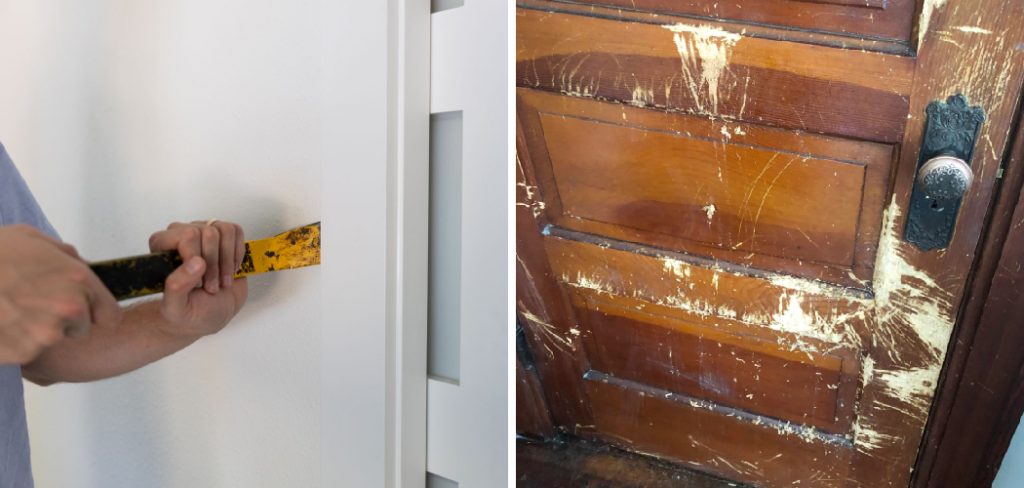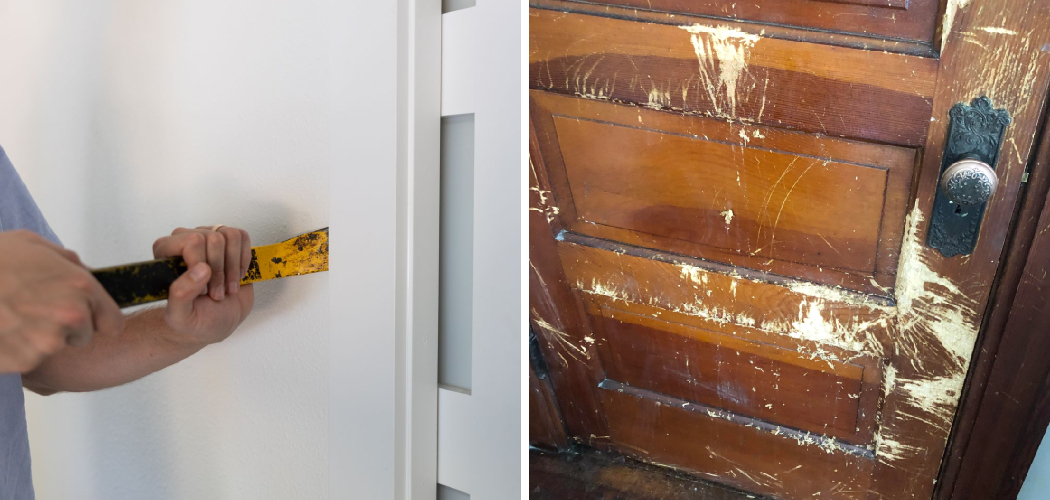Pocket doors are a stylish and space-saving solution for homes, but like any other door, they can develop issues over time. One common problem homeowners face is the door scratching against the frame or floor. Not only is this noise irritating, but it can also damage the door and surrounding surfaces if not addressed promptly. Fortunately, fixing a pocket door that scratches is a manageable task, requiring only a few tools and some patience.

In this guide on how to fix pocket door scratching, we’ll walk you through the steps to identify the cause of the scratching and how to resolve it, ensuring your pocket door operates smoothly and silently.
What is Causing the Scratching?
Before diving into the fix, it’s essential to determine what’s causing the pocket door to scratch. There could be several reasons for this issue, including:
Loose Screws or Hardware:
If the door is not securely fastened to the track and frame, it can move around and scratch against surrounding surfaces.
Misaligned Track:
Over time, the track that guides the door in and out of its pocket may become bent or warped, causing the door to rub against it.
The build-up of Debris:
Dirt, dust, and other particles can accumulate on the track or wheels over time, hindering smooth movement and causing scratching.
Worn-Out Wheels:
Like any other moving part, the wheels on a pocket door can wear out over time, leading to uneven or rough movement.
Once you’ve identified the cause of the problem, you can move on to fixing it. The following are four potential solutions to common issues that cause pocket doors to scratch.
Needed Tools
Screwdriver:
You will need a screwdriver to tighten any loose screws or remove the door from its track.
Level:
A level can help you determine if the track is misaligned and needs adjustment.
Vacuum Cleaner:
A vacuum cleaner with a hose attachment can effectively clean built-up debris from the track and wheels.
Replacement Wheels:
If your pocket door’s wheels are worn out, you may need to replace them with new ones.
8 Step-by-step Guidelines on How to Fix Pocket Door Scratching
Step 1: Tighten Loose Screws or Hardware
The first step in fixing a pocket door that scratches is to check for any loose screws or hardware. Begin by examining the door’s top and bottom tracks, as well as the brackets that hold the door in place. Use a screwdriver to tighten any loose screws you find. Pay particular attention to the screws attaching the door to the rollers; these are often the source of movement that causes scratching. Ensuring everything is snug and secure will help prevent the door from shifting and scraping against the frame or floor.

Once all screws and hardware are tightened, slide the door back and forth to see if the scratching has subsided. If not, proceed to the next step.
Step 2: Adjust the Track
If tightening the screws and hardware hasn’t resolved the scratching issue, it’s time to check the alignment of the track. An improperly aligned track can cause the door to rub against it, leading to scratches. Begin by visually inspecting the track for any bends or warps. If you find any, use a rubber mallet to gently tap the track back into place. If the track is severely misaligned, you may need to remove it entirely and reinstall it so that it is straight and even.
In some cases, the track might not be level, causing the door to sag on one side. Use a level tool to check the track’s alignment. If it isn’t level, you may need to adjust the height of the track brackets. Loosen the screws holding the track in place, make the necessary adjustments, and then tighten the screws again, ensuring the track is securely fastened. Check the door’s movement once more to see if the scratching has stopped.
Step 3: Clean the Track and Wheels
If the track and wheels are dirty or have accumulated debris, they can hinder smooth movement and cause scratching. Use a soft cloth or brush to remove any dirt, dust, or other particles from the track and wheels. You can also use a mild cleaning solution for stubborn build-up. Once everything is clean, dry the track and wheels thoroughly before testing the door’s movement again.
You may need to repeat this cleaning process periodically, depending on the amount of dirt and dust in your home. Regular maintenance will help prevent debris build-up and keep your pocket door operating smoothly.

Step 4: Replace Worn-Out Wheels
If none of the above steps have resolved the scratching issue, it’s possible that your pocket door’s wheels are worn out. Over time, constant use can cause the wheels to wear down, leading to uneven or rough movement that can result in scratches.
To replace the wheels, begin by removing the door from its track. Next, remove any screws or hardware holding the old wheels in place. Install the new wheels according to the manufacturer’s instructions, and then rehang the door on the track. Slide it back and forth to test for smooth movement without any scratching.
Step 5: Use Lubricant
If the door is still scratching after replacing the wheels, you may need to apply a lubricant to the track and wheels. Use a silicone-based lubricant or dry graphite powder to coat the track and wheels, reducing friction and allowing for smoother movement. Be sure to wipe off any excess lubricant before testing the door’s movement.
Step 6: Check Floor Level
Another potential cause of pocket door scratching is an uneven floor. If your floor is not level, it can cause the bottom of the door to rub against it, resulting in scratches. Use a level tool to check the floor’s alignment and determine if this is causing the issue. If so, you may need to adjust or re-level the floor to prevent future scratching.
Step 7: Add Bumpers or Buffers
If the door is scratching against the frame, adding bumpers or buffers can help prevent this. These small adhesive pads can be attached to the door’s edges and corners, creating a cushion between the door and surrounding surfaces. This will not only reduce scratching but also dampen any noise from the door slamming shut.
Step 8: Seek Professional Help
If none of these solutions have resolved the issue, it may be time to seek professional help. A trained handyman or contractor can assess the problem and provide a more permanent fix, such as adjusting or replacing the door’s hardware, track, or frame.
Following these steps should help you fix your pocket door’s scratching issue and ensure smooth, quiet movement. Remember to regularly maintain and inspect your pocket door to prevent future problems from arising. With proper care and attention, your pocket door can continue to function effectively for years to come.
Additional Tips for Maintaining a Smooth-Operating Pocket Door
Now that you’ve fixed your pocket door scratching issue, here are some helpful tips for preventing future problems and maintaining smooth operation:
- Regularly check for loose screws or hardware and tighten them as needed.
- Keep the track and wheels clean from dirt and debris.
- Lubricate the wheels with silicone spray or specialized pocket door lubricant every few months to ensure they move smoothly.
- Avoid slamming or forcefully opening the door, as this can cause damage and misalignment.
- If you notice any signs of wear or damage to the track, wheels, or door itself, address it promptly to prevent further issues.

By following these tips on how to fix pocket door scratching and performing regular maintenance, you can keep your pocket doors operating smoothly and silently for years to come. Remember to address any problems promptly and thoroughly before they worsen, saving yourself time, money, and frustration in the long run. Happy fixing!
Frequently Asked Questions
Q: How Do I Know if My Pocket Door Needs New Wheels?
A: If the door is difficult to open or close, moves unevenly, or makes scraping noises when in operation, it’s a good indication that the wheels may need replacing. Inspect the wheels for signs of wear and tear or damage, and if they appear to be worn out, it’s time for a replacement.
Q: Can I Use WD-40 to Lubricate My Pocket Door Wheels?
A: It is not recommended to use WD-40 as a lubricant for pocket door wheels. While it may provide temporary relief from squeaking, it can also attract dust and dirt, making the problem worse in the long run. It’s best to use silicone spray or specialized pocket door lubricant for smooth and lasting results.
Q: Is It Possible to Fix Scratches on a Pocket Door?
A: Yes, it is possible to fix scratches on a pocket door. Depending on the severity of the scratches, you can use wood filler, sandpaper, or other methods to repair and refinish the affected area. However, prevention is always better than cure. Maintaining your pocket doors and addressing any issues promptly can help prevent scratches from occurring in the first place.
Q: How Often Should I Check My Pocket Doors for Maintenance?
A: It’s recommended to check for loose screws and hardware and clean the track and wheels every few months. However, if you notice any issues with movement or operation, it’s best to address them immediately. Regular maintenance can help prolong the life of your pocket doors and prevent more significant problems from arising.
Q: Can I Install Pocket Doors Myself, or Should I Hire a Professional?
A: While pocket doors may seem simple to install, it’s always best to hire a professional for the job. Proper installation is crucial for smooth operation and preventing any future issues. An experienced contractor can ensure that the track, hardware, and door are installed correctly and will function properly for years to come.

Conclusion
Fixing a scratching pocket door may seem daunting at first, but with the right approach and a bit of patience, it can be a straightforward task. By identifying the root cause—whether it’s loose screws, a misaligned track, debris build-up, or worn-out wheels—you can apply the appropriate solutions to restore smooth and silent operation.
Regular maintenance is key to preventing future issues, ensuring your pocket door remains a functional and elegant feature in your home. By taking these steps on how to fix pocket door scratching, you’ll not only enhance the longevity of your pocket door but also enjoy a quieter, more efficient living space. Happy fixing!

